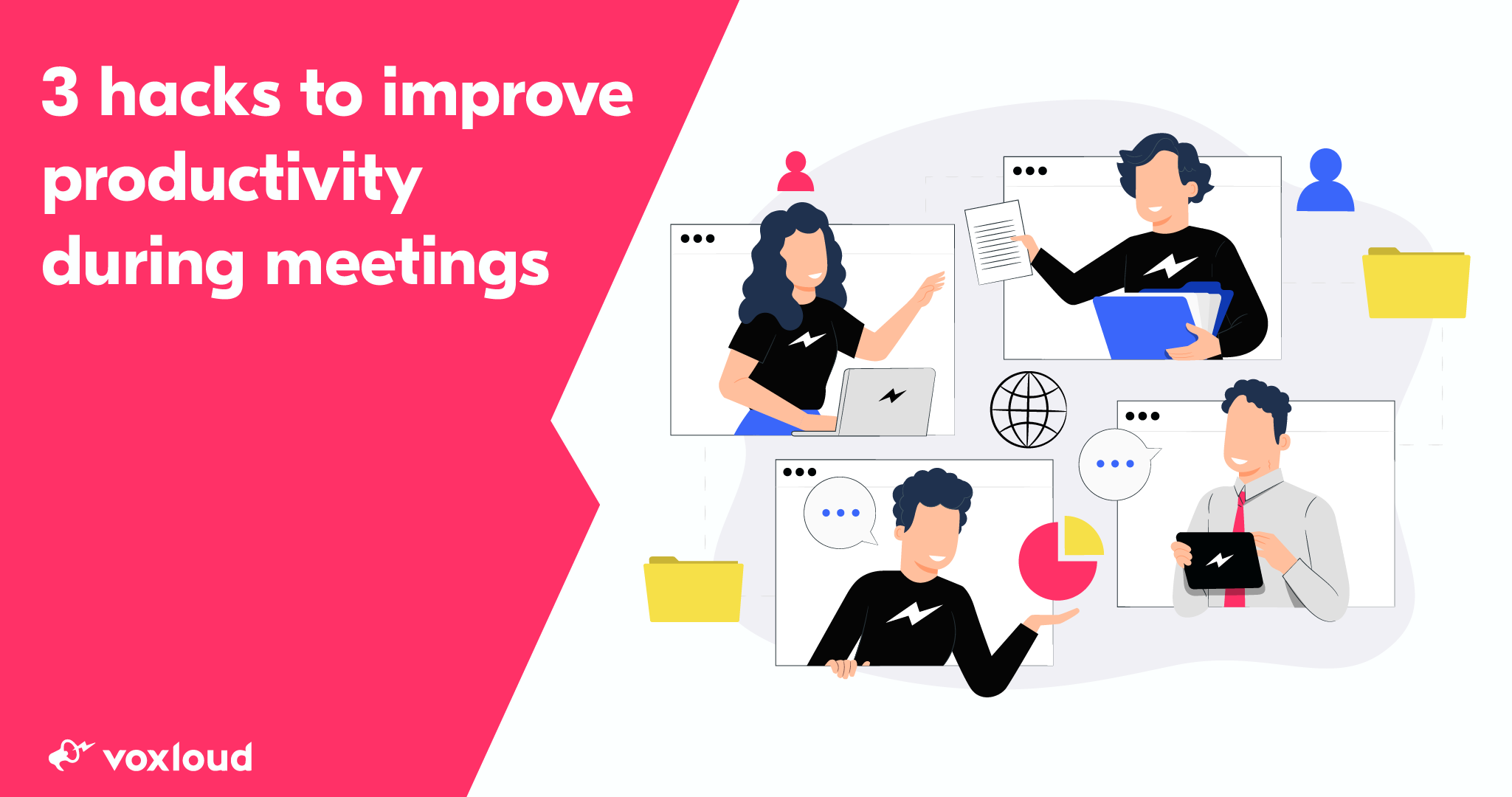Any project or activity (both internal and external to the company) requires preparation and organization to create a perfect execution.
And this, in the age of remote working and digitization, is even more fundamental if we think about online meetings.
Today we will talk about how to be truly protagonists during meetings.
Here are 3 ways to make online meetings more productive.
|
Quick Links
|
1 - Choose a "cue" to guide the conversation.
Whether it's meetings with a clear agenda or they're abrupt, creating insights and smart suggestions is key to leading a meeting and your speech.
Usually the suggestions are framed as a question, but if placed in a precise and clear way they allow anyone to answer and give their opinion.
Being clear and simple in making suggestions is essential to receive answers from other team members (especially if they are part of different departments): avoid the technical vocabulary and try to be specific without going into too much detail to allow people to suggest different points of view and new ideas.
Your incentive can also consist of an activity, such as: "We list the obstacles to achieving our goal."
Then, as you listen to the participants' responses, you can offer them new insights to advance the talk.
For example, a potential follow-up question might be: "Which of these barriers are under our control? How can we reduce or eliminate them?"
What is important is to always follow the same logical thread or topic and carry it forward through increasingly specific suggestions or concepts.
Despite having bright ideas, finding yourself unprepared without a ready and organized speech could leave your team disoriented. People lose sight of key information if it comes from a single person, simply because not everyone has a clear picture.
That's why you need to be clear, simple and not too specific in explaining your ideas.
Focus on what concrete "stimulus" group members need to feel focused.
The ideal cue meets three criteria:
- Orient or reorient people towards their position and its context
- It adds something new to their thinking
- If possible, arouse some emotion
2 - Choose a format that will appeal to your employees.
Find out what kind of setup works best for each step of your meeting: small groups, large teams or one-to-one. In general, discussions in large groups are important to foster alignment, synthesis, and the generation of new ideas.
Working in small groups releases more energy, therefore allows more discussions in less time and provides the necessary psychological security for divergent thoughts (because there is less fear of being judged by many people). And working individually creates space for preparation, self-reflection and action planning.
Since each format tends to be more suited to different personal styles, it is often helpful to incorporate all three into one meeting. I personally like to start with individual or small group work, then move on to discussion in large groups and then finish with individual or small group planning and reflection.
You also need to be prepared to switch to a different format if the meeting isn't as effective as you thought.
3 - Establish a concrete result that you want to achieve from your meeting.
Depending on your goal, the ideal outcome will involve a combination of individual outcomes, such as new intervention elements, insights, skills or relationships, and shared work products, including ideas, problem diagnosis, decisions, plans, priorities or commitments of group.
As you organize the content of your meeting, think about the results you would like to achieve, then create or borrow templates to help the group achieve them.
If your goal is to collect ideas, try using a whiteboard, on which participants can group ideas into a concept map to identify patterns. For troubleshooting, you could use a cause and effect diagram or list "the five whys" to encourage people to get to the root cause.
Showing what the team will accomplish will help everyone engage with the right level of attention. And, with a pre-set template, you may be able to share the result without any additional work.
As you experiment with ways to structure the "work" of your meetings, you will find that there is an enormous range of resources and approaches to various models or types of meetings, both virtual and face-to-face.
For longer sessions, on the other hand, you will need to create contributions, results and formats for each category and make sure that each of them is aimed towards the general goal. There is no need to thread your hand. Instead, give people the tools and guidance they need to help them contribute their best ideas.
As for the organization of meetings, it is very important to use platforms that allow you to organize meetings such as the videoconferencing function of Voxloud.
The Voxloud phone system allows you to work from anywhere, handling different employees from every part of the world.
Here you can find some advantages of the Voxloud phone system:
- You can work anywhere without geographical restrictions
- Activation in 59 seconds, without technicians
- You only pay for the features you use
- No hidden costs
- There are no penalties
- No maintenance
- A single fixed fee




